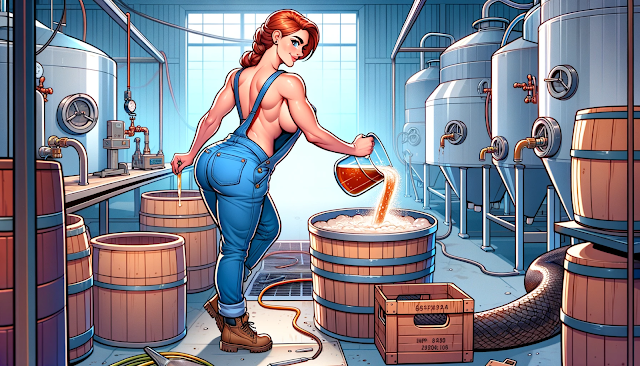It's not an unfounded question. Tales of craft brewers concocting beers with yeast harvested from peculiar sources, like the yeast found on a brewer's beard, have been circulating. This leads to the intriguing idea: if beard yeast can be used, why not bread yeast?
In diving into the research, one discovers that baking yeast indeed qualifies as an 'active dry yeast'. However, the crux of the matter is not just about the feasibility but the advisability of such a substitution.
Understanding Yeast in Fermentation
Yeast is the powerhouse behind fermentation, a process that is sensitive and complex. Its success is contingent on myriad factors, and the type of yeast used can dramatically influence the outcome. A high-quality yeast can elevate the taste of a beer, making it exceptional.
Now, the thought of using baker's yeast in brewing might make seasoned craft brewers cringe. But let's dissect this notion further.
Baking yeast and brewing yeast are, in essence, different strains of the same species, Saccharomyces cerevisiae. This common ancestry might make it seem like a reasonable substitution.
Delving into the Differences
But what differentiates baker's yeast from brewer's yeast?
The answer lies in their cultivation. Each type of yeast has been nurtured over generations for the distinct attributes that they confer to their end products. Beer yeast strains, for instance, have been refined over centuries to perfect their specific attributes: flavor profile, attenuation rate, and consistency.
An illuminating comparison elucidates their differences further: brewer's yeast is engineered to produce a higher alcohol content and less carbon dioxide.
Conversely, baker's yeast is optimized to release more CO2 and less alcohol. Using baking yeast in brewing might not give the desired results. It's akin to driving an everyday car and expecting the performance of a high-end sports car. Both serve their purpose, but they cater to different needs.
Practical Considerations in Brewing
For those keen on experimenting, how much baker's yeast should one use? A common recommendation is around 11 grams per 5 gallons (or 23 liters). Exceeding this might be counterproductive.
In terms of alcohol content, bread yeast can comfortably ferment up to about 8% ABV. Pushing beyond this, the yeast strains, usually capping at around 9-10%. Considering most beers hover between 4-8% ABV, this range seems acceptable.
However, a caveat when using baker's yeast is the resultant beer's clarity and taste. It might not mirror the crispness and transparency of beers brewed with specialized yeast. This discrepancy arises because baker's yeast doesn't settle as proficiently as brewer's yeast. To achieve clearer beer, techniques like cold crashing the fermented wort or using finings can be employed.
Broadening the Horizon: Mead, Cider, and More
Baker's yeast's versatility extends beyond beer. It can be employed to make mead and even wines. Certain mead recipes explicitly advocate for it. Moreover, for those venturing into cider-making, baking yeast can work with apple or pear cider. With careful execution, one can achieve an alcohol content of around 6%. However, it's crucial to hydrate the yeast before pitching and to monitor sugar levels judiciously.
For the audacious, fermenting apple juice with bread yeast is an option, albeit it results in a robust, punchy beverage. A mix with lemonade can mellow out its intensity.
Rescuing a Stalled Fermentation
In instances where the fermentation seems to have halted prematurely, baker's yeast can be a savior. However, introducing a secondary yeast can alter the beer's intended flavor. If this route is chosen, activating the yeast in water before pitching can be beneficial.
Available Options and Reversing the Roles
For those intrigued to experiment, a variety of baking yeasts are available in supermarkets. In places like New Zealand, Edmund's Sure To Rise is a favored choice, while Fleischmann's active dry yeast is popular elsewhere.
Interestingly, the interchangeability can be reversed. Given that brewing yeast is an 'active yeast', it can be used in baking. However, the CO2 output of brewing yeast is lesser than its baking counterpart, resulting in denser bread.
In conclusion, while the worlds of baking and brewing might seem distinct, the common thread of yeast weaves them together. Experimentation can lead to delightful discoveries, but understanding the nuances of each yeast type ensures the best results.




